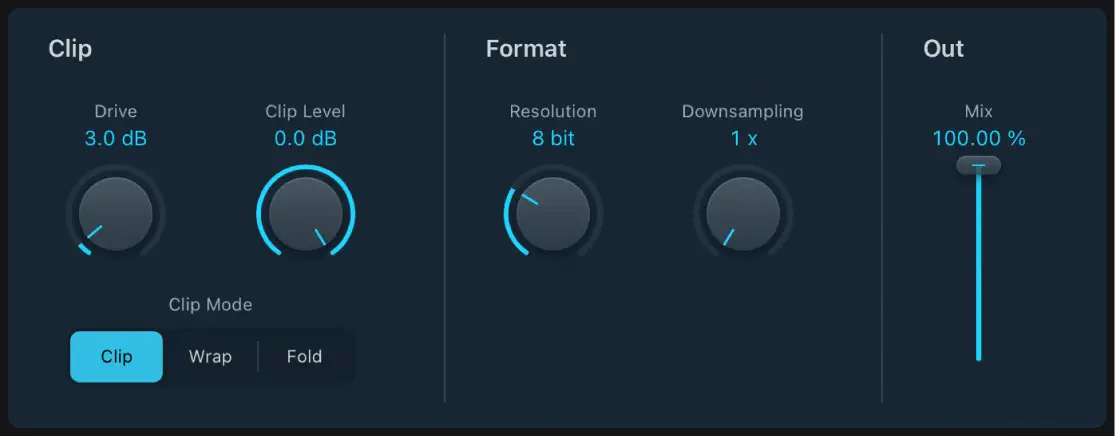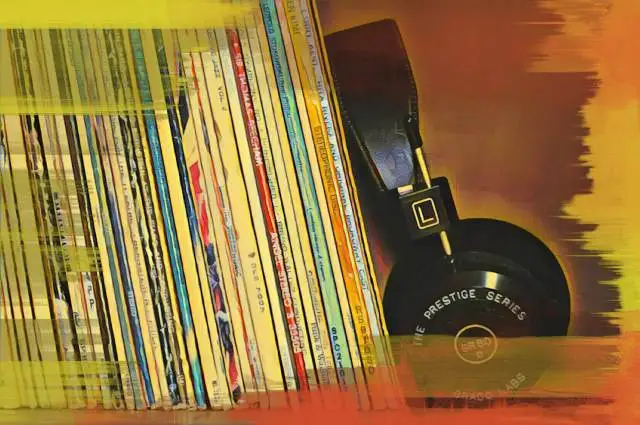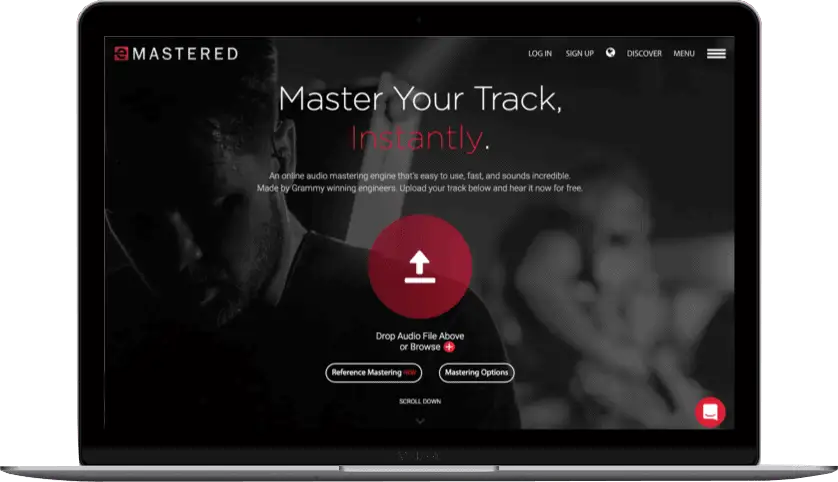These days, it feels like everyone and their drummer is chasing the vintage sound.
The rich, warm analog vibe has made its way back into just about every genre in one form or another, from lo-fi hip-hop to new-school indie rock. Even many electronic producers are adding a bit of old-school magic to their tracks. There’s something about those imperfect textures that just hits differently.
Even if you’re working on a slick, modern pop production, sometimes that digital polish can feel a little...too shiny. Maybe your mix could use some warmth, a little character, or even the charm of what sounds like a dusty cassette that’s been living in someone’s basement for a decade. The good news is that there are plenty of ways to make that happen.
In this article, we’re going to look at some practical tricks to inject vintage sound into your tracks!
6 Ways to to Get a Vintage Sound
1. Use Hardware or Hardware Emulating Plugins

If you’re aiming to sprinkle some analog-style magic on your track, adding a little distortion or warmth is the way to go. That doesn’t mean cranking everything to 11 and blowing out your speakers, though. All you need is some subtle character, something that makes your mix feel alive or like it just time-traveled from a 1970s recording studio.
One of the best ways to achieve this is by running your audio through actual analog gear . No, you don’t need to sell a kidney for a vintage LA-2A compressor. There are plenty of budget-friendly options that can do wonders. For instance, the ART Tube MP preamp is a great starting point for adding tube warmth, or you could snag something like the FMR RNC1773 compressor for smooth, analog-style dynamics.
Another cool trick is reamping . Send your track back through a guitar amp or even a cheap cassette deck, then mic it up to capture that imperfect, vibey tone.
Of course, if hardware isn’t your thing, or your wallet’s looking a little light, hardware-emulating plugins are lifesavers. Plugins like UAD’s Studer A800 or Waves’ J37 Tape can mimic the sound of real tape machines, while Slate Digital’s Virtual Mix Rack gives you a buffet of analog-style options. Whether it’s tape saturation, tube warmth, or vintage compression, these plugins let you channel that analog vibe and make your tracks sound vintage ,without leaving your DAW.
2. Tape or Vinyl
While tape hiss and vinyl crackles might’ve annoyed engineers back in the day but have now become the secret sauce for those looking to get a vintage sound. Subtle imperfections are kind of the magic. Adding a bit of hiss or the occasional crackle can give your tracks a lived-in feel. It’s like seasoning a dish. You don’t need a lot, but the right amount makes all the difference.
Why does it work so well? Warmth. Analog tape and vinyl naturally roll off some of the harshness in high frequencies while adding a bit of saturation that feels, well, cozy. And while digital audio is all about perfection, tape and vinyl remind us that a little chaos can be beautiful.
Tape, in particular, shines when it comes to saturation. Push it, and it adds subtle compression and rich harmonics. Pull it back, and you’ll get that soft, warm glue that makes everything sound like it belongs together. For tape emulation plugins, check out UAD Studer A800 , Waves J37 , or Softube Tape .
3. EQ Your Sound
EQ can be your best friend when it comes to getting a vintage sound.
First, consider cutting back on the highs . Vintage recordings often lacked the ultra-crisp treble that modern digital systems can capture, so don’t be afraid to roll off some top-end shimmer.
Next, give the low mids some love . That's where a lot of that warmth and weight live. A small boost here can make your track feel fuller and more grounded.
Another good move is band-passing . This trick trims the extreme highs and lows, focusing your sound into the midrange sweet spot where a lot of old-school character resides. It’s especially handy for instruments like guitars and vocals that you want to sound vintage without muddying the mix.
There are also plenty of vintage EQ plugins you can use. Classics like Pultec EQP-1A (UAD or Waves), Kramer HLS Channel by Waves, and Lindell 50 Series are fantastic for adding analog-style curves.
4. Use Old-School Panning
If you want a retro sound, you have to think like an old-school producer. Remember, there was a time when mono was still running the show . The way panning was used back in the day was wild compared to today’s standards, but that’s exactly what gives it so much character.
Take a page from ‘60s legends like The Beatles. Some of their mixes have drums shoved all the way to the left, vocals dead center, and guitars hanging out on the far right like they’re at a party across the room.
It’s quirky, bold, and unapologetically old-school. Sure, it’s not the most “natural” setup, but it forces your ears to engage in a completely different way. Plus, it’s a surefire way to make your track stand out.
Don’t be afraid to experiment with complete mono , either.
Back in the day, many producers worked exclusively in mono because stereo systems weren’t standard yet. Mono mixes can be punchy, focused, and incredibly effective, especially if you’re aiming for that Motown or Phil Spector wall-of-sound vibe.
For stereo mixes, go bold. Pan your instruments to extreme ends of the spectrum. Drums on the left, bass on the right? Sure, why not! The beauty of old-school panning is its lack of rules. Embrace the chaos, and your track will thank you.
5. Flip Vintage Samples
Sometimes, chasing the classic vintage vibe is just as easy as flipping vintage samples. Whether you’re working on a hip-hop beat, or some lo-fi electronic track, or just trying to give your song some retro flavor, samples can do the heavy lifting.
Legends like A Tribe Called Quest, J Dilla, and DJ Premier practically built their signature sounds around flipping old-school records, taking snippets of soul, jazz, funk, or blues and turning them into something fresh and iconic.
The best things about finding vintage samples is that it isn’t as hard as it used to be. Digging through dusty record bins at thrift stores and flea markets is still a vibe (and fun), but you’ve also got online options.
Sites like Tracklib are goldmines for legally clearable samples, and YouTube is a treasure chest of obscure, forgotten tracks just waiting to be chopped.
If you want to take it a step further, you can make your own old-school samples . Record a simple melody or chord progression, run it through tape emulation, EQ out the highs, and add some vinyl crackle for that aged feel. Then chop it up like you would with a record. Bonus points for re-pitching or slowing it down. Nothing says “vintage” like a warped loop with some wobble.
6. Reduce the Bits

In digital audio, “bits” refer to the resolution of your sound , essentially how much data is being used to represent it. Modern audio is typically 24-bit or 32-bit float, meaning it’s super clean, super clear, and… sometimes super boring if you’re chasing that retro sound.
Reducing the bits (also known as bit crushing) can give your tracks a gritty, crunchy edge that’s full of character.
The reason we mess with the bits is that back in the day, lower bit depths and sample rates were standard, and that raw, lo-fi sound became part of the charm.
Reducing the bits on a track adds digital artifacts and distortion that can feel nostalgic, imperfect, and undeniably cool. Think of it like taking a pristine, high-def photo and running it through an old disposable camera filter.
For plugins, there are plenty of great options. Decimort 2 by D16 Group is a fan favorite, offering detailed control over bit depth and sample rate. Crush by Kilohearts is another solid choice, simple but effective. And if you want something free, check out TAL-Bitcrusher or the stock bitcrusher plugin in your DAW - they can do a lot more than you’d think!
Wrapping It Up, Old-School Style
Making your song sound vintage means blending the best of old-school charm with modern tools. From tweaking your tracks' sound with EQ and bit reduction to adding warmth through tape effects and dynamic range control, there are endless ways to capture that vintage vibe.
Whether you’re emulating analog hardware or using plugins on modern equipment, the goal is to inject character and emotion into your music production. Vintage-inspired techniques remind us that imperfections can be beautiful and that sometimes, the magic lies in the unexpected quirks that make your track truly unforgettable.





